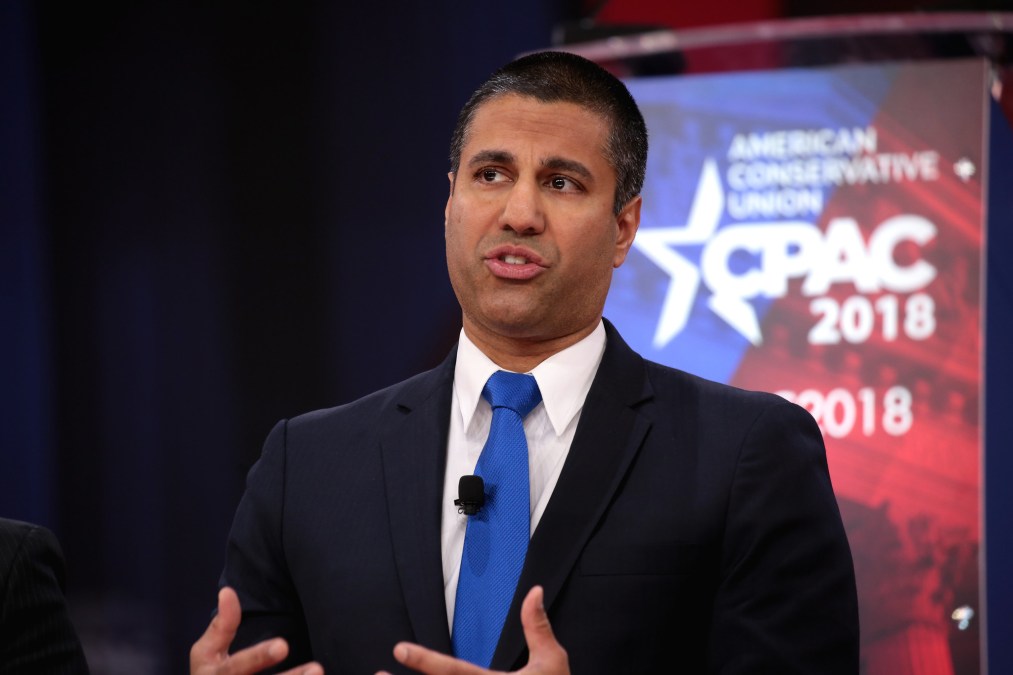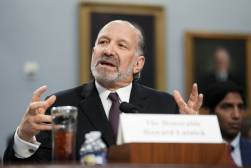FCC’s annual broadband report criticized for ‘inconsistent’ methodology

Internet access advocates said this week that the Federal Communications Commission’s claim that the number of U.S. households connected to high-speed internet service rose by 18 percent is a misleading and self-congratulatory statistic that minimizes the true lack of broadband access in rural regions of the country.
The 18 percent gain is the highlight of the FCC’s annual Broadband Deployment Report, which surveys how many Americans have access to internet service that meets the FCC’s minimum high-speed standards: download speeds of 25 megabits per second and uploads of 3 Mbps. According to the new report published Wednesday, just 21.3 million Americans lacked an equivalent speed by the end of 2017, compared to 26.1 million at the end of 2016.
But doubters of the FCC’s reporting argue that the commission’s methodology does not collect accurate data, and the report’s claim that broadband is “being deployed on a reasonable and timely basis” absolves the FCC of needing taking any action to improve how it gathers data. The FCC collects data by dividing coverage maps into census blocks, of which there are more than 11 million throughout the country. In order for a census block to be “covered,” a wireless carrier just has to prove that at least one resident in the block could, hypothetically, connect at the minimum speed.
“The core issue if you start with a data set like [the FCC’s], you’re going to have inconsistencies and flaws in the results all the way up to the high-level stats, like the fall from 26.1 million to 21.3 million,” said Tyler Cooper, a consumer policy expert at BroadbandNow.com.
Jessica Rosenworcel and Geoffrey Starks, the two Democratic members of the Republican-majority FCC, are also among the skeptics. In her dissenting opinion, Rosenworcel wrote that the report allows the commission to “clap its hands and pronounce our broadband job done.”
But census blocks vary wildly in size, from as small as a single city block in urban communities to hundreds of square miles in rural areas. Wireless carriers don’t have to spend money to provide service to rural census blocks if they can prove coverage under this definition, which has led to criticism from state broadband officials and other stakeholders that phone companies can easily overrepresent their coverage
Last year, two Vermont state employees spent months driving nearly 7,000 miles across the state to prove that Verizon and other carriers had lied to the FCC about their coverage. And in August, the Institute for Local Self Reliance reported that the FCC’s representation of high-speed coverage was “grossly” overstated, and served to benefit large telecommunications companies like Verizon and AT&T.
FCC Chairman Ajit Pai, a former Verizon lobbyist, ordered an investigation into the submission of coverage data in December. It is still ongoing.
The deployment report published Wednesday, however, relies on the style of coverage mapping that experts say discounts most of the overarching statistics. Though this report claimed that 21.3 million people still lacked broadband access, a fact sheet released by the FCC in February incorrectly set the number of Americans without broadband access at 19.4 million. The error was attributed to a wireless carrier called Barrier Free that reported providing high-speed coverage to 62 million people across the Northeast, which would make it country’s fourth-biggest internet service provider.
Barrier Free acknowledged the error in March, but the FCC had already published the fact sheet with the false data, which Cooper said underscores the faultiness of the FCC’s methodology.
“It just seems like the FCC is continually playing catch up with regards to its data sets and its metrics that it chooses,” he said. “That begs the question of how many more errors like this, either smaller or larger, go undetected.”
In his dissent to the deployment report, Starks wrote the fact that false Barrier Free data was included in the February fact sheet undermines the validity of the entire report.
“These issues go to the core nature of the Deployment Report, and more broadly, our FCC mission to determine where broadband service is and is not deployed, and to be grounded in and led by the actual facts and data,” he wrote.
Cooper said that he was encouraged by some of the report’s findings, including that 5.9 million homes were wired with fiber in 2018. But his optimism about that figure was overshadowed by the uncertainties resulting from the FCC’s methodology.
“To be honest, I’d be more excited if there weren’t some glaring issues obfuscating the underlying data used by the FCC,” he said.






